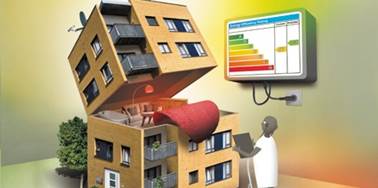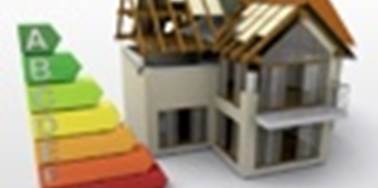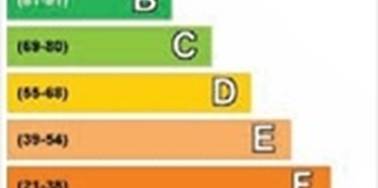Energetic Performance Certificate (EPC)
Energy Performance Certificates (EPC) are being introduced to help improve the energy efficiency of buildings. To give information on how to make your home more energy efficient and reduce carbon dioxide emissions
If you are buying or selling a home you now need a certificate by law. From January 2009 EPCs will be required whenever a building is built, sold or rented out.
How does an EPC work?
The certificate provides 'A' to 'G' ratings for the building, with 'A' being the most energy efficient and 'G' being the least, with the average up to now being 'D'.
The EPC rates the home's performance in terms of energy use per square metre of floor area, energy efficiency based on electricity costs, and environmental impact based on carbon dioxide (CO2) emissions. This provides an energy efficiency rating and an environmental impact (CO2) rating.
There are seven bands for both of these ratings, from A to G. The energy efficiency rating is colour-coded from green to red, with the green end of the scale indicating that the home is very energy efficient, with lower running costs, and the red end of the scale indicating it is not energy efficient and has higher running costs.
There is also a numerical rating from 1 - 100. The bigger the number the more energy efficient the home is and the lower the electric bills will be.
The environmental impact rating is colour-coded from blue to grey, signifying 'very environmentally friendly - lower CO2 emissions' at the blue end of the scale through to 'not environmentally friendly - higher CO2 emissions' at the grey end.
Again, there is a numerical rating, from 1 - 100, and the bigger the number, the less impact the house has on the environment

Accredited energy assessors produce EPCs alongside an associated report which suggests improvements to make a building more energy efficient.
The EPC is part of a series of measures being introduced across Europe to reflect legislation which will help cut buildings’ carbon emissions and tackles climate change.
Other changes include requiring public buildings - for example town halls, libraries, hospitals - to display certificates showing the energy efficiency of the building and requiring inspections for air conditioning systems.
According to the law nº78/2006 of the 4th of April of 2006, all new buildings regardless of the area and purpose, will have to have from this day forward an Energetic performance certificate and take measures towards a reduction of the consumption of energy, such as: solar panels to provide electricity and heating.
Until now, this certificate was only demanded to new buildings with a built area superior to 1000 square meters.
But now that the second stage of the Energetic Certification System, which has started in July 2008 has extended to all buildings both new and old.
The document will affect all properties being sold, so along with all your property documents you now have to have Energetic performance certificate.
The government portuguese company (ADENE) who issues the Energy Performance Certificates (EPC) have now created a web site for you to do your own simulation. Energy performance simulator for households, to learn the energy performance of your home. Its funn, have a try....
Please click on the following link http://www.casamais.adene.pt/








